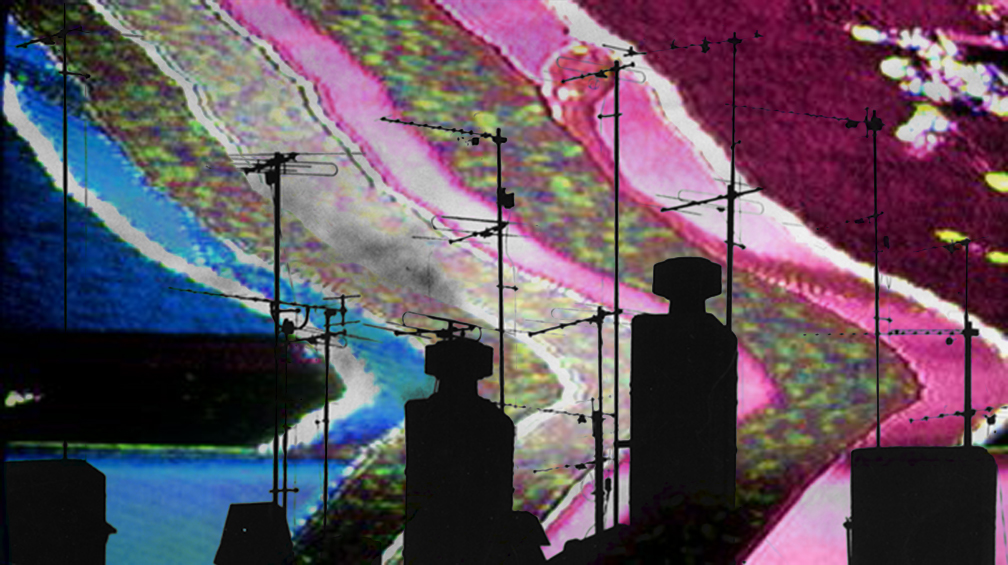I recently saw a t-shirt (online, of course) that read: “When I was your age the internet went “Skawee Reweert!” I laughed out loud … and still find it odd that I must clarify that by adding: no, really.
But I can go one better: when I was your age the TV went “Raaaaaaatch! Ka-tchk-tchk-tchk-tchk!”
Well, the aerial did, anyway. What’s an aerial? Oh, man. Now you’re reminding me of the 19 year-old who held up a 7″ record, also known as a 45, and said “What the heck is this?” … but that’s another story.
Anyway – the aerial, or antenna, was this tree-branch looking thing made of metal tubing that you’d install on top of your house in order to receive television signals. That’s right: television didn’t come out of a cable or off the internet; you’d snatch the signals right out of the air, somewhat like wifi, and you used an antenna to do it. It’s not been that long, they’re still around. Undoubtedly you’ve seen one and I’m just being condescending going on about it like this.
Well, ours rotated.
We lived in a remote valley, you see. A valley at the mouth of a canyon whose depth and contours made receiving broadcast signals of this sort a mite tricky. In order to catch more than one signal with any strength, the antenna had to be turned this way and that.
This remarkable feat was achieved by mounting the antenna on a motorized base that was wired into the power supply of the house as well as a controller box that sat on top of the television. And here you were probably thinking we wouldn’t have had a remote control for our TV in those days …
 The first TV I remember us having was a wood cabinet affair with a little space beneath it to slip the TV listings and a few magazines. I think it had some kind of aerial of its own poking out of the top but it was next to useless in our location, so my dad hooked it up to The Box. My mom watched Nixon stagger out of office on the thing. When I asked her why she was crying, she said it was because it was a very sad day for America. Huh. The guy looked pretty chipper to me; turning to beam and wave his victory (or was it peace?) signs, as he left on his last presidential helicopter ride.
The first TV I remember us having was a wood cabinet affair with a little space beneath it to slip the TV listings and a few magazines. I think it had some kind of aerial of its own poking out of the top but it was next to useless in our location, so my dad hooked it up to The Box. My mom watched Nixon stagger out of office on the thing. When I asked her why she was crying, she said it was because it was a very sad day for America. Huh. The guy looked pretty chipper to me; turning to beam and wave his victory (or was it peace?) signs, as he left on his last presidential helicopter ride.
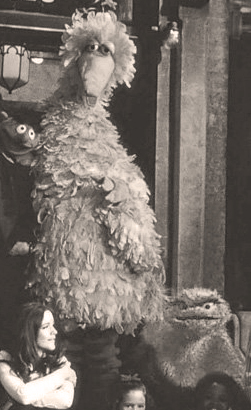 The display on this TV was black and white but I think it must have had a sepia cast because that’s how I saw things on it. I inferred and intuited other tones as well, which I would report to my mom who would, in turn, assure me that I was nuts – but it was true! I really thought I saw some colors. For instance, I saw Oscar the Grouch as yellow because the tone of his fur
The display on this TV was black and white but I think it must have had a sepia cast because that’s how I saw things on it. I inferred and intuited other tones as well, which I would report to my mom who would, in turn, assure me that I was nuts – but it was true! I really thought I saw some colors. For instance, I saw Oscar the Grouch as yellow because the tone of his fur 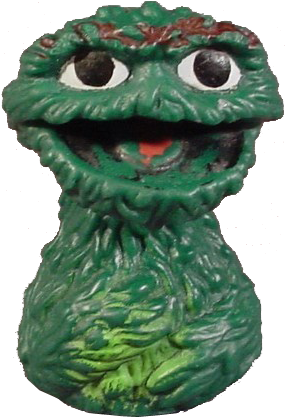 was similar to that of Big Bird’s on our TV. Seeing Sesame Street finger puppets over the chest freezers at Safeway, I was aghast: “They got Oscar the Grouch wrong, mom! They made him greeeen!”
was similar to that of Big Bird’s on our TV. Seeing Sesame Street finger puppets over the chest freezers at Safeway, I was aghast: “They got Oscar the Grouch wrong, mom! They made him greeeen!”
Life is a series of hard lessons, isn’t it? *
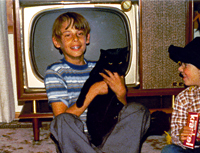 Not that we watched a ton of TV. My brother and I spent more time outside playing or working than watching television, my parents much the same, but we did tend to have favorite shows throughout the week. Mostly wholesome, whitebread, prime time crap we watched as a family after dinner: The Waltons, McCloud, Adam 12, Emergency, Ironsides – and, of course, Saturday morning cartoons for my brother and I: Mighty Mouse, Rocky and Bullwinkle, Scooby-Doo, The Ant and the Aardvark, The Bugs Bunny/Road Runner Hour. My dad, a big fan of Wile E. Coyote, would sometimes watch this latter with us, causing my mother to shake her head in mock disgust: “a grown man watching cartoons … “.
Not that we watched a ton of TV. My brother and I spent more time outside playing or working than watching television, my parents much the same, but we did tend to have favorite shows throughout the week. Mostly wholesome, whitebread, prime time crap we watched as a family after dinner: The Waltons, McCloud, Adam 12, Emergency, Ironsides – and, of course, Saturday morning cartoons for my brother and I: Mighty Mouse, Rocky and Bullwinkle, Scooby-Doo, The Ant and the Aardvark, The Bugs Bunny/Road Runner Hour. My dad, a big fan of Wile E. Coyote, would sometimes watch this latter with us, causing my mother to shake her head in mock disgust: “a grown man watching cartoons … “.
 Eventually my parents scraped up the cash for a nicer, newer, bigger, color console TV. A “nicer, bigger, color console TV” in the mid ‘70’s meant a 25″ screen wrapped in a chunky, faux wood cabinet. Yow – such luxurious styling! Below the on off button and the channel knobs, there was a little, raspy door you could open to reveal the speaker and knobs for adjusting – or monkeying with, if you were a kid – the vertical and horizontal hold, chroma, brightness, and more. All right there within easy reach. I can barely figure out how to operate my TV these days, such is modern convenience.
Eventually my parents scraped up the cash for a nicer, newer, bigger, color console TV. A “nicer, bigger, color console TV” in the mid ‘70’s meant a 25″ screen wrapped in a chunky, faux wood cabinet. Yow – such luxurious styling! Below the on off button and the channel knobs, there was a little, raspy door you could open to reveal the speaker and knobs for adjusting – or monkeying with, if you were a kid – the vertical and horizontal hold, chroma, brightness, and more. All right there within easy reach. I can barely figure out how to operate my TV these days, such is modern convenience.
The cabinet on this TV was so wide mom put a big, old, fake tree in a bowl and a statue of Don Quixote up there next to the antenna rotator box – and still there was space for the cat to bask. Yes, this was well before the days that such real estate would be eaten up by cableboxes, Betamax, and VHS players.
Oh, yes. that’s right: no movies at home.
If you wanted to see a film after it had played in the theater, you had to wait for one of the networks to show it and, when they did, it was the Reader’s Digest condensed version with content removed to make it fit into two hours, plus space for commercials and other people’s moral outrage. Anything deemed too disturbing for the youth and the grannies of the country was carefully excised. No wonder we grew up thinking war looked pretty neato.
Instead of on demand movies, sports, and cartoons, we had six whole channels to choose from: 2, 4, 5, 6, 7, and 9. When we got that new color TV, I was amazed to see it had not one but *two* channel-changing knobs – with numbers that went up to 200.
200?!? That’s crazy talk …
I dutifully checked each channel past 9 for signs of life but to no avail. I wasn’t too surprised, actually. There was hardly ever anything on worth watching on the six channels we already had – how could you possibly fill up 194 more?
My relatives in California had many active channels past 9 yet, the few times we visited when TV played anything beyond a background role, I noticed there really *wasn’t* anything on beyond channel 9 and, worse, the things that were on were no longer in their correct times or on their correct channels. The psychological effect of this experience on my larval self is in measurable part responsible for my continued regarding of LA as a kind of alternate dimension.
Back home (and more on point), there was little to no overlapping signal between our 6 channels. This meant that, when you were done watching M*A*S*H* on channel 5, you had to get up, walk over to the TV, change the channel (all done by hand in those days: we were a robust people), then turn the dial on the antenna rotator box to the corresponding number sticker.
“Raaaaaaatch! Ka-tchk-tchk-tchk-tchk!”
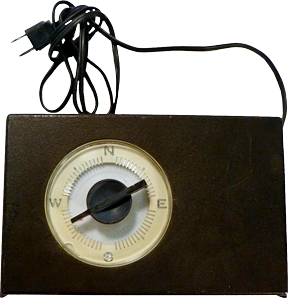
The milky, plastic face of the dial would light up as the box clicked along in time to the slow, solid-state rotation of the aerial on the roof above it. Meanwhile, the television picture displayed a wide and unpredictable variety of states between signal and distortion until, the red arrow on the dial nearing its destination, things began to firm up … somewhat.
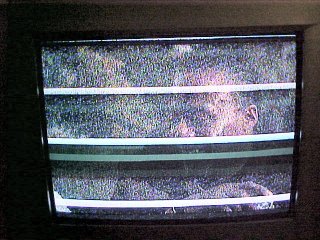 Reception was never a given. Channels 4 and 6 were always pretty tight but 5, 7, and 9 could be sketchy in certain kinds of weather and channel 2 was susceptible to solar flares. Luckily, 5 and 7 were the same network (one out of Denver, one out of Cheyenne) so, if one of the two channels was acting up, you could always try the other.
Reception was never a given. Channels 4 and 6 were always pretty tight but 5, 7, and 9 could be sketchy in certain kinds of weather and channel 2 was susceptible to solar flares. Luckily, 5 and 7 were the same network (one out of Denver, one out of Cheyenne) so, if one of the two channels was acting up, you could always try the other.
Yes, that’s right: 6 channels, two of which were the same (at least during prime-time). It’s a wonder we survived, eh?
I remember when channel 12 was added to the station lineup. I was in my teens and BOY was I excited! Initially you had to get a special loop antenna to receive it but, when that changed, I was finally able to add public access TV from Broomfield to my entertainment options-WOW!
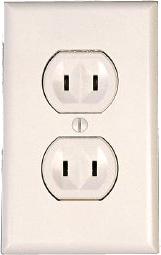 Another funny thing about TV in those days was that there were no polarized or grounded plugs on most household appliances, just two, uniform prongs. The outlets in our house were not built to accept any other shape. This meant that if someone used anything with an electric motor, such as a can opener or a hairdryer, it would cause noisy lines of static to roll up the screen or jag-out the picture.
Another funny thing about TV in those days was that there were no polarized or grounded plugs on most household appliances, just two, uniform prongs. The outlets in our house were not built to accept any other shape. This meant that if someone used anything with an electric motor, such as a can opener or a hairdryer, it would cause noisy lines of static to roll up the screen or jag-out the picture. 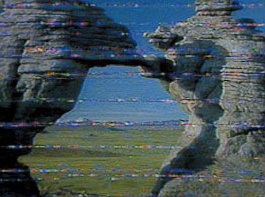 Really horrible. If you did it when your parents were watching their show it was “shut that damned thing off!” If they did it while you were watching your show and you complained it was “just for that, shut off that idiot box and get your work gloves on!”
Really horrible. If you did it when your parents were watching their show it was “shut that damned thing off!” If they did it while you were watching your show and you complained it was “just for that, shut off that idiot box and get your work gloves on!”
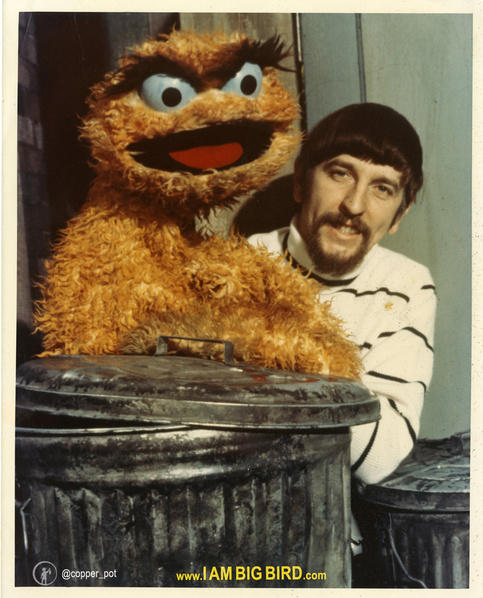 * Holy crap – I was right! While researching this piece I learned that the original Oscar actually *was* yellow/orange! The producers changed it because they felt there were too many yellow characters (Big Bird, Bert) and that anything living inside a trash can would be a dirty green – but that first Oscar? I was interpreting the “colors” I saw correctly. Hot damn.
* Holy crap – I was right! While researching this piece I learned that the original Oscar actually *was* yellow/orange! The producers changed it because they felt there were too many yellow characters (Big Bird, Bert) and that anything living inside a trash can would be a dirty green – but that first Oscar? I was interpreting the “colors” I saw correctly. Hot damn.

